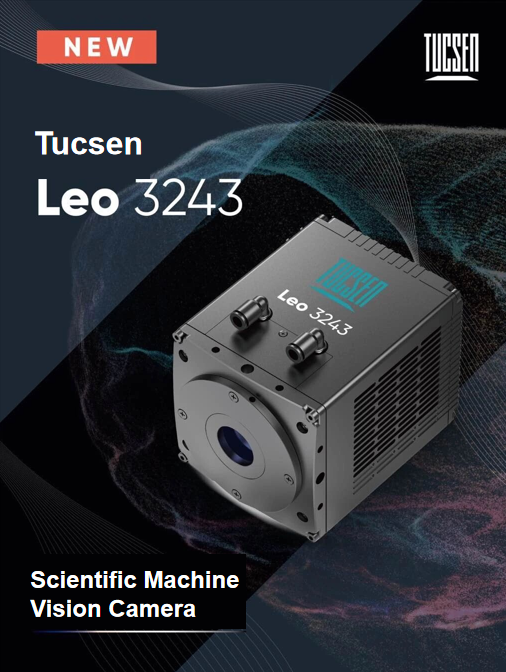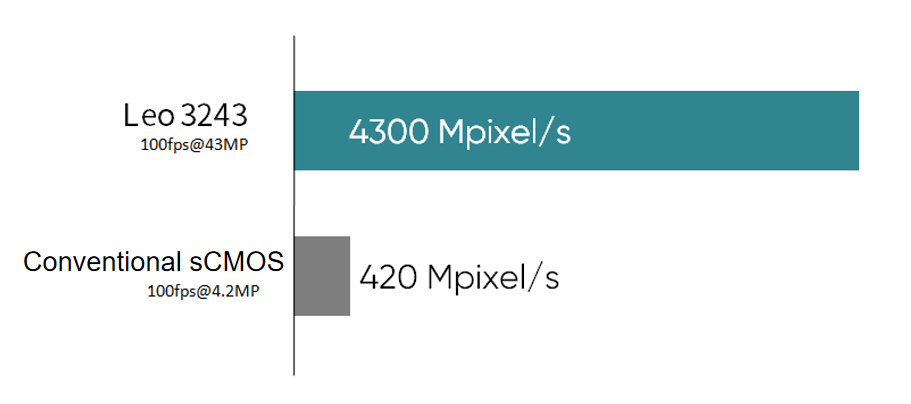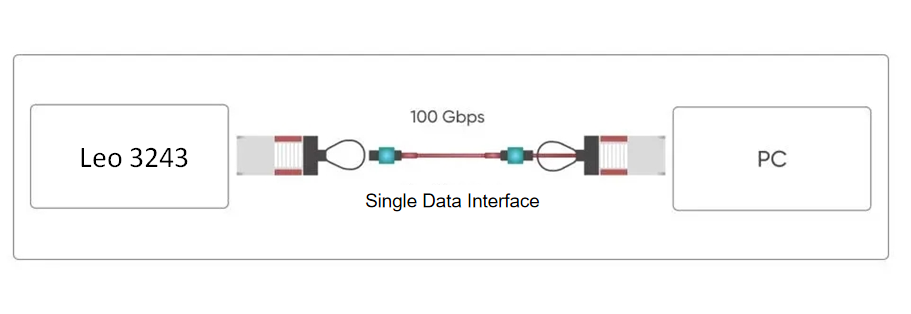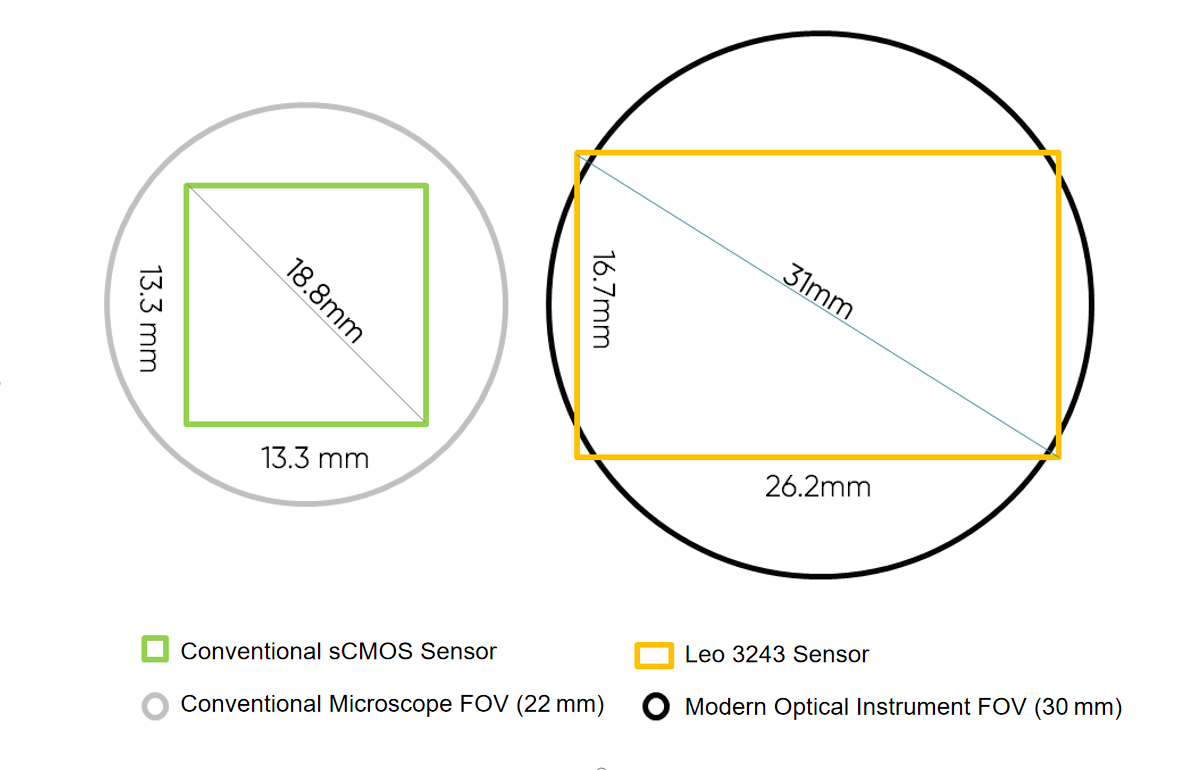Fuzhou, China —February 2025 — Tucsen Photonics today announced the launch of the Leo 3243, a next-generation large-format, high-speed scientific camera engineered for high-throughput imaging in advanced life science and industrial applications. As the first model in the new Leo series, the Leo 3243 represents a major leap forward in imaging performance—combining stacked BSI sCMOS technology, a 100G CoF high-speed data interface, and a 31 mm large-format sensor to meet the escalating data, quality, and integration demands of AI-driven automation.
Meeting the Challenges of the High-Throughput Era

Over the past two decades, imaging systems have evolved rapidly—from CCD to sCMOS—driven by the growing need for higher throughput and more precise data. Today, as AI-powered automation and big data analysis dominate next-generation instruments, camera technologies face three defining challenges:
• Escalating data throughput requirements, shifting from gigabytes to terabytes;
• Tighter data quality standards for automated, quantitative analysis;
• Accelerated upgrade cycles, demanding greater collaboration between imaging, data, and system design domains.
The Leo 3243 was purpose-built to address these challenges, empowering instrument manufacturers to achieve breakthrough imaging performance across scientific and industrial applications.
Breakthrough Technologies in Leo 3243
Stacked BSI sCMOS: Tenfold Increase in Data Throughput
Conventional sCMOS architectures often sacrifice speed or resolution to achieve high sensitivity. The Leo 3243 overcomes these trade-offs with stacked BSI (Backside Illuminated) sCMOS technology, delivering 80% quantum efficiency, 2 e⁻ readout noise, and 20 ke⁻ full-well capacity per pixel.
With 43 MP resolution at 100 fps, the Leo 3243 provides ten times the data throughput of traditional sCMOS cameras—unlocking simultaneous gains in sensitivity, resolution, and speed.

100G CoF Interface: Eliminating Transmission Bottlenecks
Legacy interfaces like Camera Link or CoaXPress 2.0 can no longer keep pace with modern throughput demands. The Leo 3243 introduces a 100G CoF (Chip-on-Flex) high-speed data interface that delivers 100 Gbps bandwidth through a single connection.
This next-generation architecture minimizes signal loss, simplifies PCB design, and enhances system stability—offering high-speed, scalable, and reliable data transmission for future-ready imaging platforms.

The Leo 3243 utilizes 100G CoF high-speed interface technology, providing 100G bandwidth through a single interface. This enables real-time transmission of high-throughput data at 100 fps with 43 MP resolution. It boasts advantages such as high speed, stability, and strong scalability, effectively breaking through the technical limitations of traditional interfaces.
31 mm Large Format.: 2.5× Wider Field of View
Most sCMOS cameras employ an 18.8 mm sensor, limiting compatibility with new optical systems that extend beyond 25–30 mm fields of view.
The Leo 3243 features a 31 mm large-format sensor, expanding the imaging area by 2.5× per frame. This broader field of view aligns with modern instrument trends, reducing stitching errors and improving data fidelity across wide-field, high-throughput applications.

3.2 µm Pixels: Optimized for Optical Precision
With optical systems increasingly shifting to lower magnification for high-throughput imaging, larger pixel sensors face undersampling issues that degrade resolution.
The Leo 3243’s 3.2 µm pixels are precisely tuned to meet the Nyquist sampling rate for ≤40× magnification objectives, ensuring high-resolution, high-accuracy raw image data for advanced AI analysis.
The Leo 3243, with its 3.2µm high-resolution pixels, is better suited to the Nyquist sampling rate for optical systems with magnifications of 40X or lower, ensuring higher-quality raw data for automated analysis.
A New Era for High-Throughput Imaging
“For over two decades, I have witnessed the evolution of camera technology from CCD to sCMOS and the tremendous opportunities this has created for high-end instruments,” said Feng Lou, Director of Product Business Development at Tucsen.
“The Leo 3243 embodies our deep integration of optics, sensors, and data systems—achieving breakthroughs that would not have been possible without close collaboration with our partners across the imaging ecosystem.”
— Feng Lou, Director of Product Business Development, Tucsen
Availability
The Tucsen Leo 3243 is now available for global partners and system integrators. For complete technical specifications and application details, visit www.tucsen.com.
About Tucsen Photonics
Tucsen Photonics is a leading developer and manufacturer of high-performance imaging solutions for scientific and industrial applications with operations in China, Singapore, UK, USA and Europe. With a commitment to innovation and quality, Tucsen Photonics continues to redefine the possibilities of digital imaging.
Media Contact
Yuki Tang
Marketing Director
Email: yukitan@tucsen.com
Tucsen Photonics
LinkedIn: www.linkedin.com/company/tucsen
Web :www.tucsen.com


 2025/10/30
2025/10/30







